Welcome to the world of Summer Green Gram Cultivation, where agriculture meets scientific precision for optimal yield. Green gram, scientifically known as Vigna radiata, is a warm-season legume that thrives in the summer heat. Cultivating this versatile crop requires a nuanced approach, considering factors like soil composition, temperature, and water management. In this blog, we’ll delve into the intricacies of Summer Green Gram cultivation, exploring proven methods to enhance productivity.
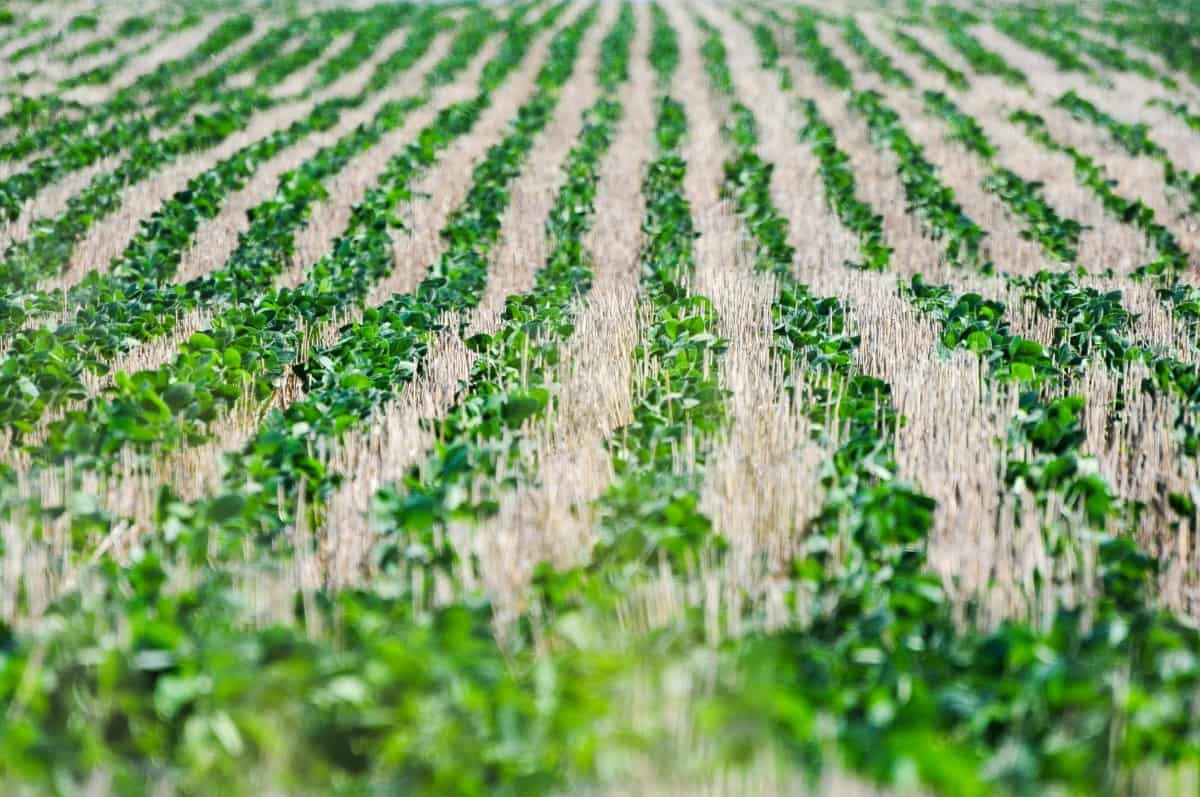
Summer Green Gram Cultivation
Introduction to Summer Green Gram Cultivation
Green gram, mung bean or moong, is a leguminous crop that is widely cultivated in India and other Asian countries. Green gram is a source of protein, fiber, iron, and vitamin C and has many health benefits. Green gram can be consumed as whole grains, split pulses, sprouts, or flour. Green gram is also used as a green manure crop, as it can fix atmospheric nitrogen and improve soil fertility. Green gram is a short-duration crop that can fit well in many cropping systems.
Climate and Soil Requirements for Green Gram Cultivation
Green gram can grow in a wide range of climatic conditions, but it prefers warm and humid weather with a temperature range of 25°C to 35°C. It can tolerate moderate rainfall of 85 to 100 cm, well distributed throughout its growing period of 100 days. However, waterlogging and cloudy weather are harmful to the crop. Green gram can be grown in both the kharif and summer seasons in North India and the rabi season in South India.
Green gram can be grown on a different types of soils, from sandy loam to black cotton soils, having good drainage capacity. Saline, alkaline soils are not suitable for green gram cultivation. Green gram is very sensitive to waterlogging conditions. The optimum soil pH for green gram cultivation is 6 to 7.
Varieties of Green Gram Suitable for Summer Cultivation
RUM-1: This is a high-yielding variety developed by Rajasthan Agricultural University. It has a duration of 65 to 70 days and produces bold seeds with good cooking quality. It is resistant to yellow mosaic virus and cercospora leaf spot diseases.
HUM-12: This is another high-yielding variety developed by Haryana Agricultural University. It has a duration of 70 to 75 days and produces medium-sized seeds with good cooking quality. It is resistant to yellow mosaic virus and tolerant to Cercospora leaf spot disease.
BM-4: This is a high-yielding variety developed by Tamil Nadu Agricultural University. It has a duration of 75 to 80 days and produces small-sized seeds with good cooking quality. It is resistant to yellow mosaic virus and tolerant to powdery mildew disease.
PDM-54: This is a high-yielding variety developed by the Indian Agricultural Research Institute. It has a duration of 80 to 85 days and produces medium-sized seeds with good cooking quality. It is resistant to yellow mosaic virus and tolerant to powdery mildew disease.
JM-72: This is a high-yielding variety developed by Jawaharlal Nehru Krishi Vishwa Vidyalaya. It has a duration of 85 to 90 days and produces medium-sized seeds with good cooking quality. It is resistant to yellow mosaic virus and tolerant to powdery mildew disease.
K-851: This is a high-yielding variety developed by Punjab Agricultural University. It has a duration of 90 to 95 days and produces medium-sized seeds with good cooking quality. It is resistant to yellow mosaic virus and tolerant to powdery mildew disease.
PDM-11: This is a high-yielding variety developed by Indian Agricultural Research Institute. It has a duration of 95 to 100 days and produces large-sized seeds with good cooking quality. It is resistant to yellow mosaic virus and tolerant to powdery mildew disease.
In case you missed it: Black Gram and Green Gram Varieties for Kharif and Rabi Seasons
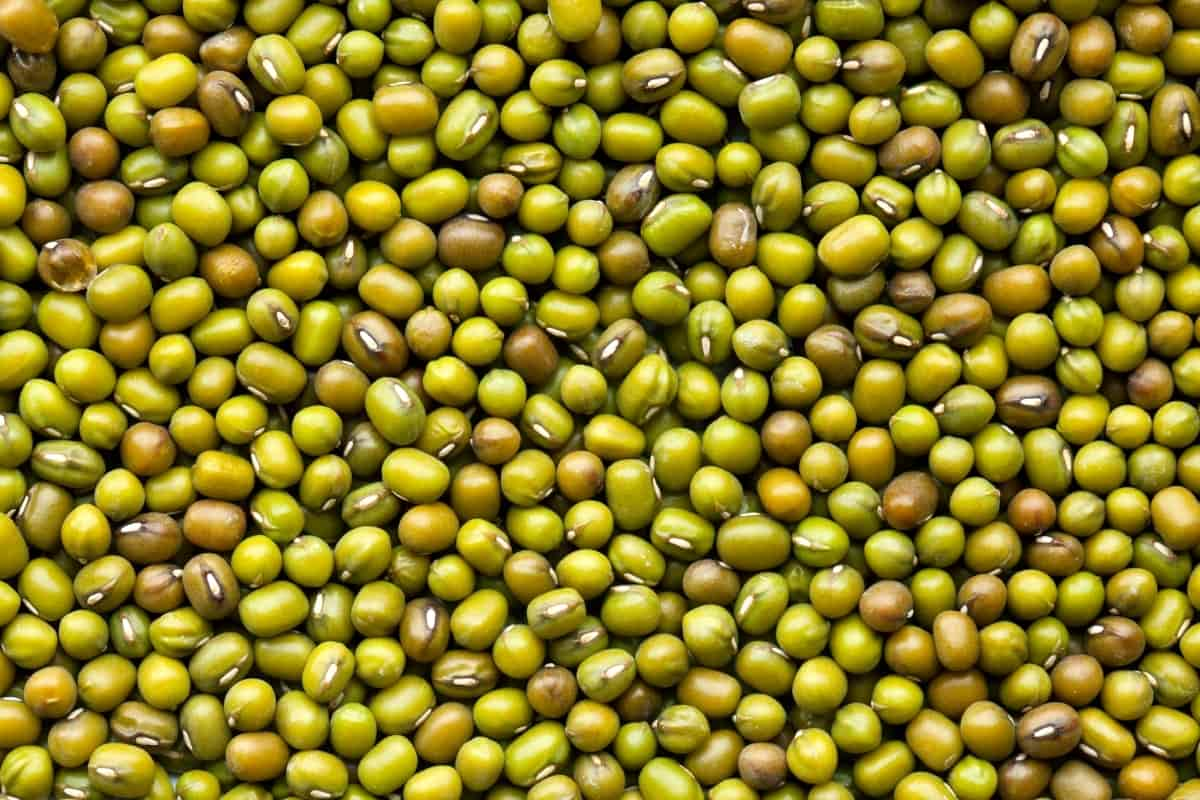
Land Preparation and Sowing Techniques for Summer Green Gram
The land should be prepared well for sowing by one or two plows followed by two or three crosses, harrowing, and planking. The field should be well-leveled and free from weeds and stubbles. The seed rate for summer green gram cultivation is about 15-20 kg per hectare. The seed selection should be done carefully by choosing healthy, uniform, and disease-free seeds.
The seed treatment should be done by soaking the seeds in water for 8 hours and then treating them with rhizobium culture (600 g per hectare) or carbendazim (2 g per kg of seed) or thiram (3 g per kg of seed) to enhance germination, nodulation, and disease resistance. The sowing should be done by broadcasting or drilling method at a depth of 3 to 4 cm and a spacing of 30-45 cm between rows and 10-15 cm between plants. The sowing time for summer green gram cultivation is from mid-March to mid-April in North India and from January to February in South India.
Irrigation Management in Summer
Irrigation is the application of water to the soil for crop growth and development. The frequency, rate, amount, and time of irrigation are different for different crops, types of soil, and seasons. Summer crops need a higher amount of water as compared to winter. Green gram is a short-duration legume crop that can be grown in summer as well as rainy season. It is also known as mung bean or moong dal. Rich in protein, fiber, minerals, and vitamins.
It is used for human consumption as well as animal feed. It also helps improve soil fertility by fixing atmospheric nitrogen. The irrigation requirement of green gram depends on the soil type, climate, crop stage, and rainfall. Generally, green gram needs 4-5 irrigations during its growth period. The first irrigation should be done when about 20-25% of plants have germinated or about 20 days after sowing.
The second irrigation should be done at the time of flowering, which is about 35-40 days after sowing. The third irrigation should be done at the pod formation stage, which is about 50-55 days after sowing. The fourth irrigation should be done at the pod-filling stage, which is about 65-70 days after sowing. The fifth irrigation may be given if there is no rainfall during the pod maturation stage, which is about 80-85 days after sowing.
In case you missed it: Best Fertilizer for Green Gram: Organic, NPK, Biofertilizer, and Application
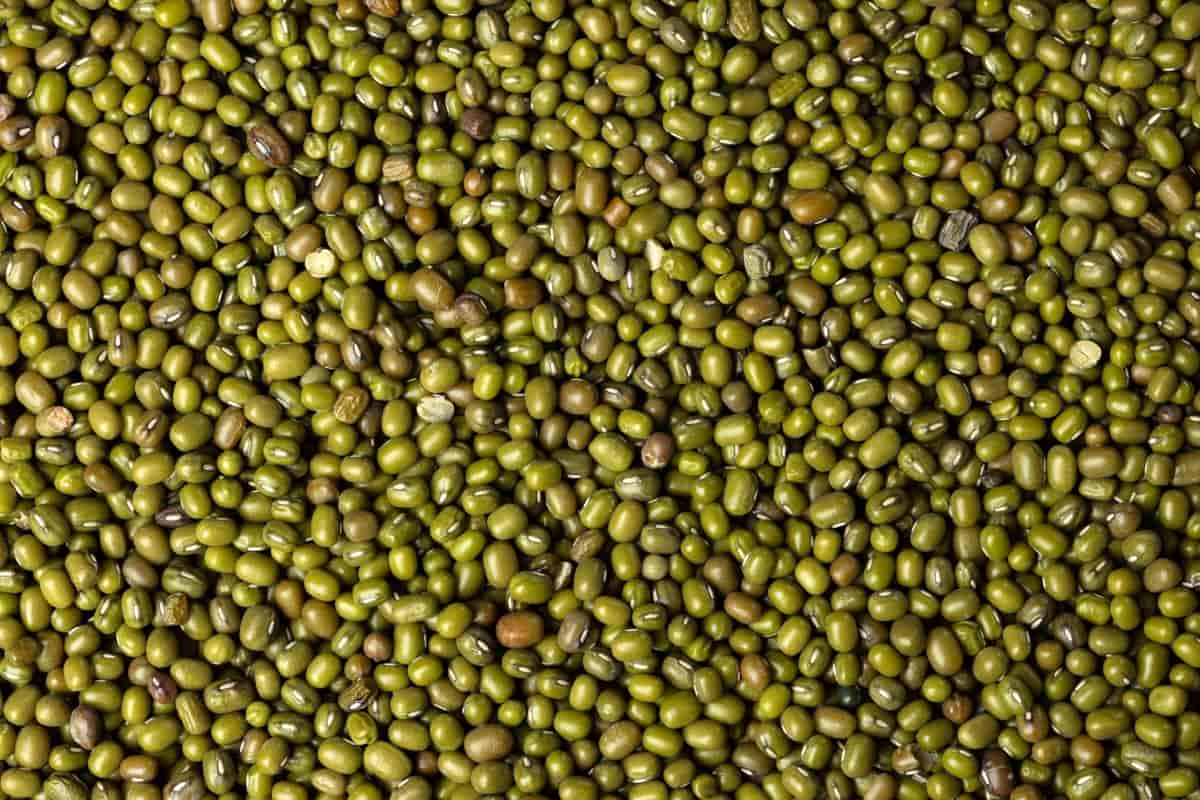
The amount of water applied per irrigation should be sufficient to wet the root zone of the crop, which is about 30-40 cm deep. The rate of water application should be adjusted according to the soil infiltration capacity and water holding capacity. The irrigation interval should be based on the soil moisture depletion and crop water requirement. The irrigation method should be suitable for the soil type, topography, water availability, and crop geometry. The common methods of irrigation for green gram are furrow irrigation, basin irrigation, sprinkler irrigation, and drip irrigation.
Pest and Disease Management
Green gram cultivation faces a myriad of challenges posed by various pests and diseases, each capable of significantly reducing yield and quality. Among the prominent adversaries is the Gram pod borer, known for its polyphagous appetite attacking leaves, buds, flowers, and pods, causing considerable damage and a potential 50% yield loss when unchecked. Another formidable foe is the Spotted pod borer, inflicting up to 30% yield loss by weaving its destructive web on buds, flowers, and pods.
The Spiny pod borer targets green gram pods, leaving longitudinal slits and compromising seed quality, with a potential yield loss of 20% in its wake. The blue butterfly and grass blue butterfly pose threats by causing leaf skeletonization and flower drop, respectively, leading to yield losses of up to 15% and 10%. The Bihar hairy caterpillar contributes to a 10% yield loss through defoliation and reduced plant vigor.
Stem fly, Pod weevil, Bean aphid, Leaf hopper, Podfly, Lablab bug, Whitefly, Thrips, and Blister beetle collectively present a multifaceted assault on green gram, each contributing to yield losses ranging from 10% to 15%. These pests manifest in various forms, targeting stems, pods, flowers, and leaves, with diverse modes of infestation.
Nematodes, including Cyst nematode and Root-knot nematode, invade green gram roots, forming galls or cysts and impeding nutrient and water uptake, potentially causing significant 50% yield losses if uncontrolled.
Anthracnose, Bacterial leaf blight, Cercospora leaf spot, Powdery mildew, Root rot and leaf blight, Rust, and Macrophomina blight are some of the diseases at the end of the list. These can each cause up to 50%, 50%, 30%, 30%, 30%, and 30% yield loss, respectively. These diseases affect leaves, stems, pods, and roots, displaying symptoms like lesions, blights, and wilting. Effective management strategies are imperative to safeguard green gram crops from this array of threats. Implementing integrated pest management, employing resistant varieties, and timely application of fungicides and pesticides.
In case you missed it: Pest and Disease Management in Red Gram: Causes, Symptoms, Chemical, and Biological Control
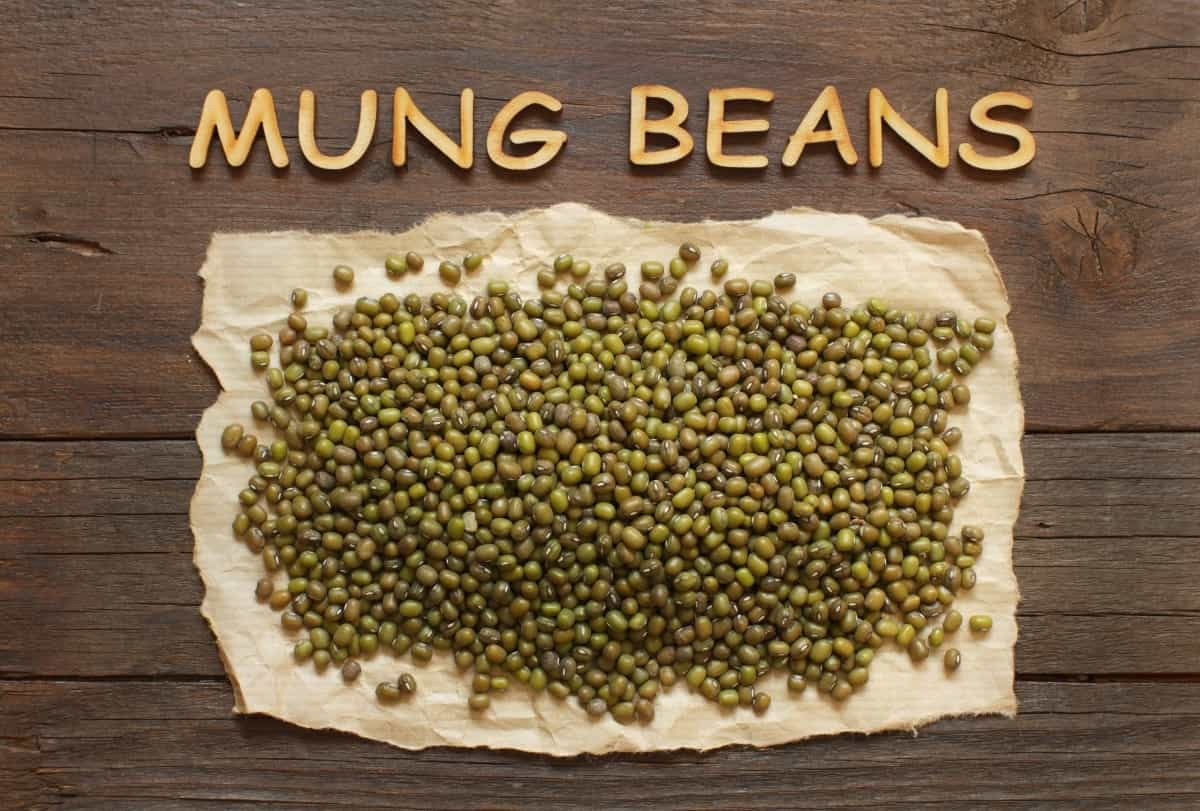
Fertilization Practices for Green Gram Crop
Green gram is a legume crop that can fix atmospheric nitrogen in the soil using Rhizobium bacteria. It requires minimal nitrogen fertilizer but requires phosphorus, potassium, sulfur, and micronutrients for optimal growth and yield. Recommended fertilization practices include applying 10 tonnes of well-decomposed farmyard manure or compost per hectare before sowing, treating seeds with Rhizobium culture at 25 grams per kilogram of seed, applying 25 kg of nitrogen, 50 kg of phosphorus pentoxide, and 50 kg of potassium oxide as basal doses, and 20 kg of sulfur per hectare.
Micronutrients like zinc, boron, iron, manganese, and molybdenum applied as foliar sprays or soil applications. Excessive use of nitrogen fertilizer can cause excessive vegetative growth, delayed flowering, reduced pod setting, and increased susceptibility to pests and diseases.
Weed Control Strategies in Summer
Weeds, unwanted plants, can significantly reduce the yield and quality of green gram crops by up to 50%. To ensure successful cultivation, use clean and certified seeds, prepare the land well by plowing, harrowing, and leveling, and sowing seeds at the recommended spacing and depth. Apply pre-emergence herbicides like pendimethalin or oxyfluorfen within three days of sowing to control annual grasses and broadleaf weeds.
In case you missed it: Best Fertilizer for Chickpea/Bengal Gram: Organic, NPK, Management, How and When to Apply
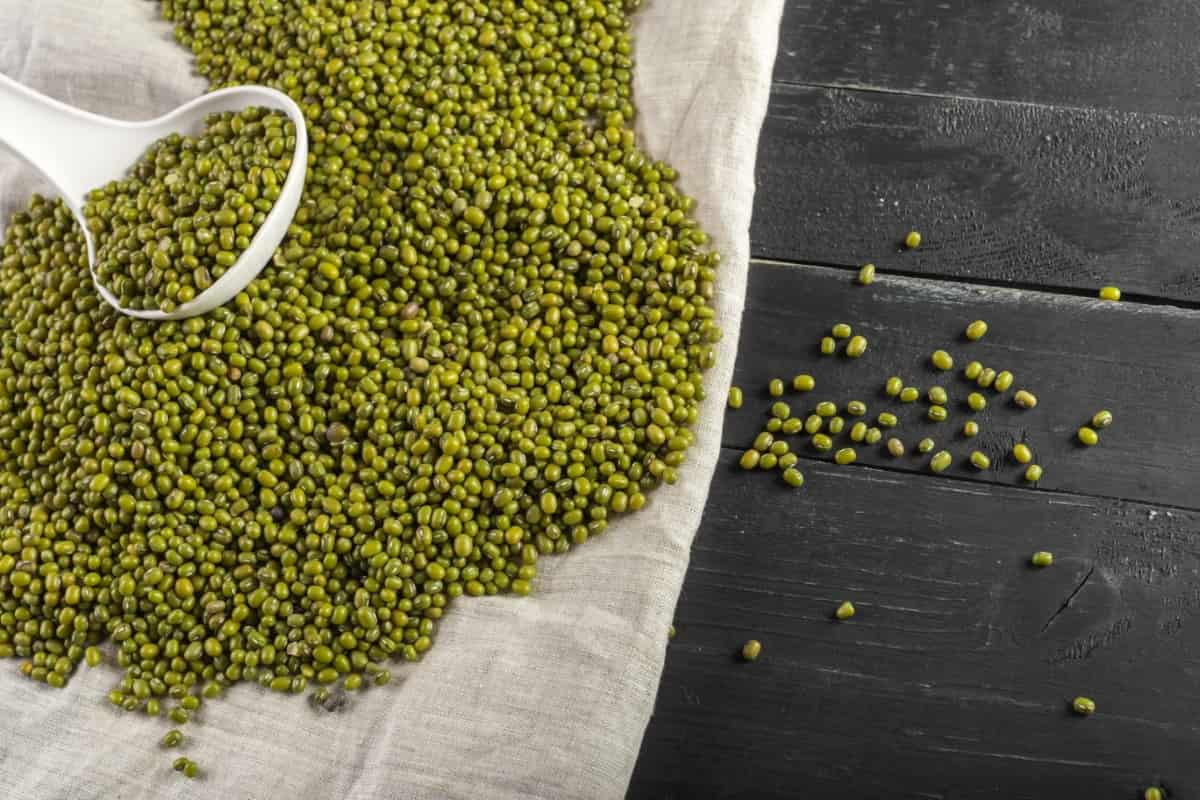
Hand weed or hoe the crop at 20 and 40 days after sowing to remove escaped or perennial weeds. Mulch the crop with straw, leaves, or plastic sheets to suppress weed growth and conserve soil moisture. Avoid intercropping or mixed cropping with green gram to avoid increased weed competition and interference with weed control operations.
Harvesting and Post-Harvest Management
Green gram crops are ready for harvest when 80% of the pods turn yellowish-brown and dry. Harvesting time depends on variety, sowing time, climatic conditions, and market demand. Post-harvest management practices include:
- Manual harvesting.
- Threshing.
- Drying seeds to 10% moisture content.
- Cleaning seeds.
- Treating seeds with fungicides.
- Storing them in clean, dry, and airtight containers.
Seeds should be stored in a cool, dry, well-ventilated place from direct sunlight, moisture, and rodents. The harvesting process involves cutting the plants manually or mechanically, threshing, and separating seeds from pods, chaff, and dust. Seeds should be dried to 8-10% moisture content, avoiding direct sunlight exposure.
Seeds should be cleaned by hand or using graders or separators. Fungicides like thiram or carbendazim can prevent fungal infections during storage. Seeds stored in cool, dry, and well-ventilated areas, with seed moisture content below 10% and storage temperature below 25°C for long-term viability.
Economic Viability and Market Potential of Summer Green Gram
The cost of cultivation, totaling Rs. 24,900 per hectare, encompasses expenses on seed, organic inputs, fertilizers, herbicides, labor, irrigation, and miscellaneous items. In contrast, the yield of green gram stands at 1000 kg per hectare, translating to an income of Rs. 80,000 per hectare. The resultant net income, calculated as the difference between total income and cultivation cost, is a commendable Rs. 55,100 per hectare. The benefit-cost ratio, a key metric indicating profitability, stands at an encouraging 3.21.
In case you missed it: Organic Black Gram Farming -Production In India
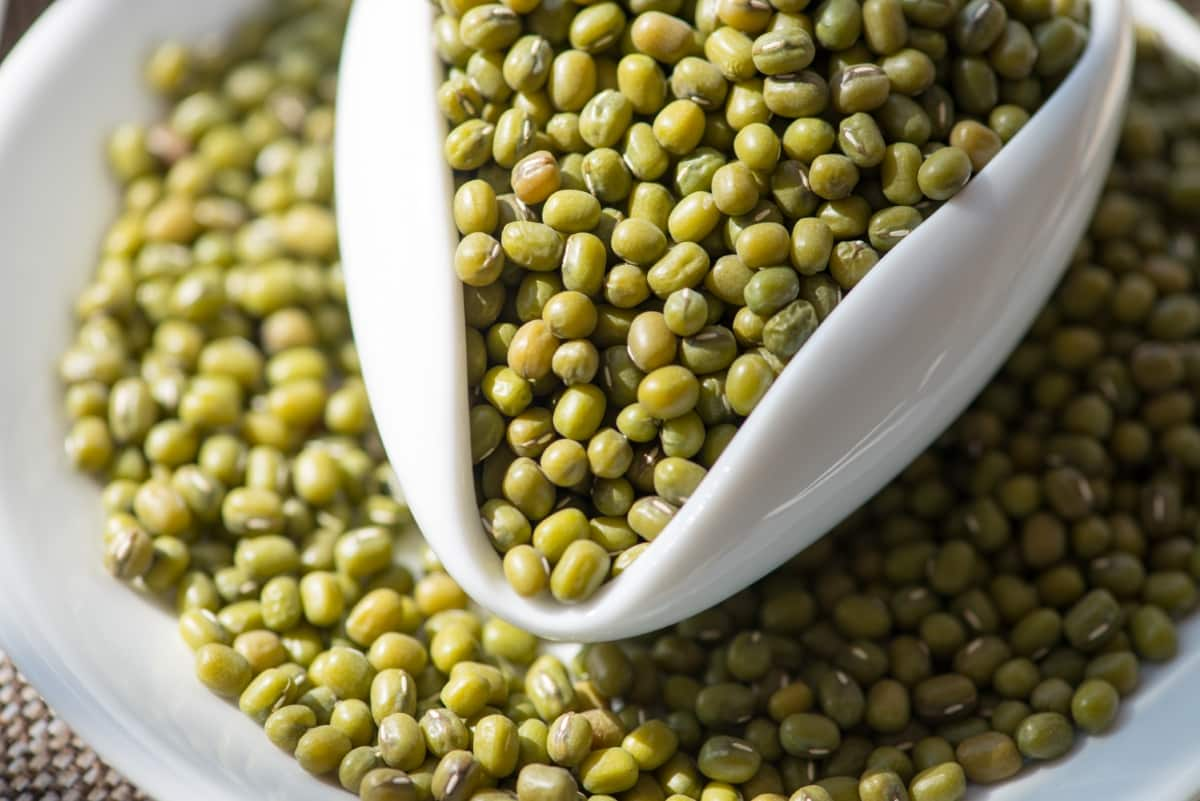
Beyond the economic lens, Green Gram enjoys high market potential, driven by its versatile consumption patterns. It finds use in various forms, such as whole seeds, split seeds, sprouts, flour, noodles, and snacks. Moreover, its export demand extends to countries like Bangladesh, Pakistan, Sri Lanka, Nepal, Myanmar, Thailand, Vietnam, Indonesia, Malaysia, Singapore, China, Japan, Korea, the USA, the UK, Canada, and Australia. The increasing demand is fueled by the nutritional benefits of green gram and its suitability for diverse cuisines.
Conclusion
Summer Green Gram Cultivation stands as a financially rewarding and sustainable agricultural pursuit. With a favorable benefit-cost ratio and expanding market demand, it not only promises economic gains for farmers but also contributes to global nutrition through its versatile consumption options.
- Types of Pesticides Used in Agriculture: A Beginner’s Guide
- Economical Aquaculture: A Guide to Low-Budget Fish Farming
- 15 Common Planting Errors That Can Doom Your Fruit Trees
- How to Make Houseplants Bushy: Effective Tips and Ideas
- Innovative Strategies for Boosting Coconut Pollination and Yield
- Pollination Strategies for Maximum Pumpkin Yield
- The Complete Guide to Chicken Fattening: Strategies for Maximum Growth
- Natural Solutions for Tulip Problems: 100% Effective Remedies for Leaf and Bulb-Related Issues
- Revolutionizing Citrus Preservation: Towards a Healthier, Greener Future
- Natural Solutions for Peony Leaf and Flower Problems: 100% Effective Remedies
- Maximizing Profits with Avocado Contract Farming in India: A Comprehensive Guide
- Natural Solutions for Hydrangea Problems: 100% Effective Remedies for Leaf and Flowers
- The Ultimate Guide to Choosing the Perfect Foliage Friend: Bringing Life Indoors
- From Sunlight to Sustainability: 15 Ways to Use Solar Technology in Agriculture
- The Ultimate Guide to Dong Tao Chicken: Exploring from History to Raising
- The Eco-Friendly Makeover: How to Convert Your Unused Swimming Pool into a Fish Pond
- Mastering the Art of Delaware Chicken Farming: Essentials for Healthy Backyard Flocks
- 20 Best Homemade Fertilizers for Money Plant: DIY Recipes and Application Methods
- How to Craft a Comprehensive Free-Range Chicken Farming Business Plan
- Brighten Your Flock: Raising Easter Egger Chickens for Beauty and Bounty
- How to Optimize Your Poultry Egg Farm Business Plan with These Strategies
- Subsidy for Spirulina Cultivation: How Indian Government Schemes Encouraging Spirulina Farmers
- Ultimate Guide to Raising Dominique Chickens: Breeding, Feeding, Egg-Production, and Care
- Mastering the Art of Raising Jersey Giant Chickens: Care, Feeding, and More
- Ultimate Guide to Raising Legbar Chickens: Breeding, Farming Practices, Diet, Egg-Production
- How to Raise Welsummer Chickens: A Comprehensive Guide for Beginners
- How to Protect Indoor Plants in Winter: A Comprehensive Guide
- Ultimate Guide to Grow Bag Gardening: Tips, Tricks, and Planting Ideas for Urban Gardeners
- Guide to Lotus Cultivation: How to Propagate, Plant, Grow, Care, Cost, and Profit
- Agriculture Drone Subsidy Scheme: Government Kisan Subsidy, License, and How to Apply Online
- Ultimate Guide to Raising Araucana Chickens: Breed Profile, Farming Economics, Diet, and Care
- Bringing Hydroponics to Classroom: Importance, Benefits of Learning for School Students
- Ultimate Guide to Raising Polish Chickens: Breed Profile, Farming Economics, Diet, and Care
- Ultimate Guide to Raising Australorp Chickens: Profile, Farming Economics, Egg Production, Diet, and Care
- Silkie Chicken Farming: Raising Practices, Varieties, Egg Production, Diet, and Care
- Sussex Chicken Farming: Raising Practices, Varieties, Egg Production, Diet and Care